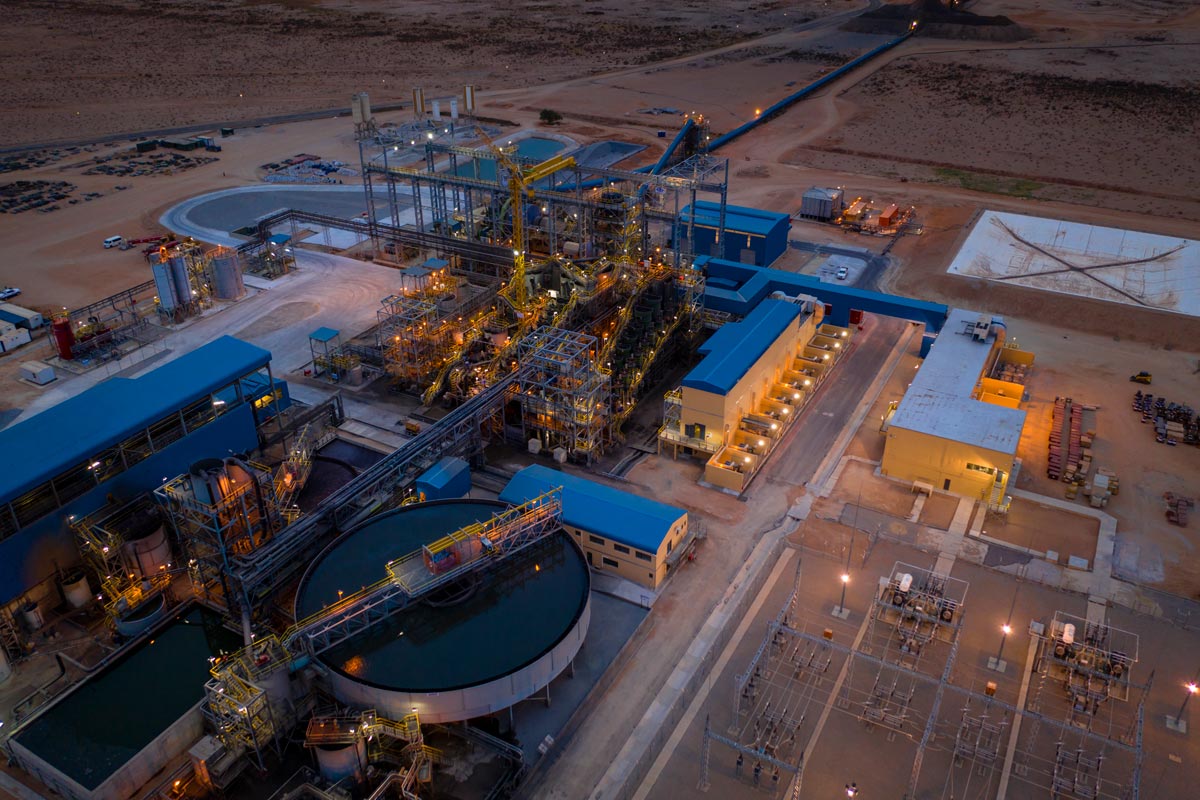
Mining and South Africa go hand in hand. The country owes much of its development to its rich natural resources. And although mining’s contribution to national GDP is now a fraction of what it once was, it is still the eighth largest mining country in the world when production values are taken into consideration. Much of this production is in zinc, the output of the subject of this article, Gamsberg Mine, now the centerpiece of the world’s largest zinc mining and processing complex.
The Gamsberg Mine (‘Gamsberg’) is an open pit zinc and lead mine owned by Vedanta Zinc International (VZI), the world’s sixth largest diversified resources company. The mine is one of two assets held by VZI in South Africa, the other being the nearby Black Mountain Mining. Business Excellence decided to take a deep dive into the latest mining asset in a long line from Africa’s largest economy.
Background
Significant zinc deposits were first discovered at Gamsberg fifty years ago, in 1972. However, it wasn’t until advancements in mining technology made the extraction of this deposit feasible again, over 40 years later, that interest discussions about its exploitation began in earnest. In July 2015, construction at the mine commenced with the groundbreaking ceremony., and its first production began in March 2019.
Gamsberg has by now nearly its projected phase one ramp up to 250kt, and phases 2 and 3 will bring a combined 350kt extra, when completed by 2025. All of the capital work, which came in on budget at $400 million has been completed at the mine, and the concentrator is fully operational. By the beginning of 2022, it is expected that production will have increased by 20%, bringing the mine to production capacity.
Socio Economic Impact
From the moment that the Gamsberg project was announced, it was heralded as a new dawn for South African mining, and not just because of its scale. At the outset, its management team placed an emphasis on youth training, gender diversity, safety and minimal environmental impact - not always easy for open pit mines. During the construction phase, the project employed over 1,500 locals, with 500 being permanently employed at the mine.
On the environmental side, Gamsberg’s location in the ecologically sensitive Succulent Karoo Biome, places it right in the heart of one of the world’s biodiversity hotspots - home to more than 400 unique succulent plant species. Gamsberg’s parent company, VZI, committed to harvest almost 85,000 plants, which were relocated to other nurseries and botanical gardens. It also collected more than 300,000 seeds for storage in the Gamsberg nursery seedbank for future germination.
Covid-19 response
The in-person and on-site nature of mining meant that the world’s largest mining companies were among the most diligent in putting Covid-19 protection measures in place. VZI was no different. This effort began with the immediate formation of the Vedanta Zinc International Covid-19 Management Crisis Committee. which comprised labour representatives, a return to work medical assessment, and the compilation of a code of practice related to Covid-19 preventative measures.
A series of initiatives were rolled out to ensure the maximum safety of all staff. These included Covid-19 awareness and training, daily temperature screening of anybody entering the Gamsberg facilities, strict traveling procedures, and the provision and enforcement of protective and hygiene equipment. Against the backdrop of an horrific pandemic, Gamsberg and VZI were not only able to increase mining production, but also do so without any casualties to the virus.
Partners and Suppliers
A project of Gamsberg’s scale is never short of a diverse range of partners and suppliers. It comes with the territory. One of the differences with the Gamsberg projects and several others - equally reputable - mines that Business Excellence has had the honour of reporting on, is that it has the luxury of calling on local experts. South Africa’s mining heritage means that it has an ecosystem of companies that provide all manner of mining-related services.
Examples of these local champions include Minopex, the mine’s operations contractor, OHMS (Open House Management Solutions) a geotechnical and seismological services provider, Basil Read, a local mining firm, ELB Construction, responsible for the design, supply, and installation of Gamsberg’s filter press, BB Cranes, which installed the overhead cranes, Viva Engineering who worked on many of the technical aspects of the mine, and last but not least, Oculus IP Architects, a firm from Cape Town responsible for the mine’s wireless network.
In terms of international partners and suppliers, several well-known names appear on the list. These include Portuguese firm Rangel Logistics Solutions, which carried out a large specialised road transportation from Johannesburg, German firm Liebherr Mining, New Zealand’s Luxsant Construction and Projects, Ferrada Blast from Italy, and finally, Mota-Engil Africa, awarded a contract worth €240 million for the preparation, excavation and transport at Gamsberg.
Projecting to the Future
Despite its already impressive scale, Gamsberg may represent just the beginning of something much larger. In the short-term, this will involve increasing production to capacity. In the mid-term, parent company VZI has already stated its ambition to continue, and indeed accelerate, its exploration drilling efforts in the region. A zinc smelter is also in the works to complement the existing operations.
VZI is also looking to South African renewable energy giant Eskom for increasing its sustainable electricity access. Luckily for Gamsberg, the area in which it operates is rich in suitable natural renewable energy sources that it can use to power its operations. At a time when the world needs zinc and sustainable energy more than ever, VZI and Gamsberg mine are pushing for both - truly heralding a new era for zinc mining.
DOWNLOAD
 GamsbergMine-Dec-2021.pdf
GamsbergMine-Dec-2021.pdf












